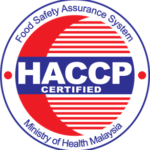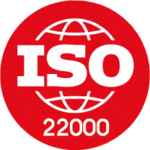HACCP Malaysia Practices, Methodologies and Silo Cleaning
HACCP in Malaysia
 Hazard Analysis and Critical Control Points (HACCP) is a systematic approach used in the food industry to identify, assess, and control potential hazards that could compromise food safety.
Hazard Analysis and Critical Control Points (HACCP) is a systematic approach used in the food industry to identify, assess, and control potential hazards that could compromise food safety.
While HACCP is primarily designed for food safety, its principles can be adapted to other industries, such as storage silo cleaning in industrial contexts.
HACCP Methodologies and Silo Cleaning
Here’s how HACCP methodologies can be applied to storage silo cleaning:
1. Conduct a Hazard Analysis: Identify potential hazards associated with storage silo cleaning. These could include chemical exposure, confined space entry risks, equipment malfunction, dust inhalation, and more.
2. Identify Critical Control Points (CCPs): Determine the stages in the silo cleaning process where hazards can be controlled or minimized. Examples include proper ventilation during cleaning, using appropriate personal protective equipment (PPE), and monitoring chemical usage.
3. Establish Critical Limits: Set measurable criteria for each CCP. For instance, the concentration of cleaning chemicals used, the time workers spend in confined spaces, or the level of dust exposure allowed.
4. Implement Monitoring Procedures: Develop processes to monitor the identified CCPs. This could involve real-time monitoring of worker exposure, regular checks of equipment functionality, and continuous assessment of chemical concentrations.
5. Establish Corrective Actions: Determine what actions should be taken if a CCP exceeds its critical limit. For example, if a worker’s exposure to dust exceeds the limit, provide additional protective gear or adjust cleaning techniques.
6. Verification and Validation: Regularly review and validate the effectiveness of the HACCP plan. This could involve independent audits, equipment tests, and employee training assessments.
7. Record Keeping: Maintain detailed records of all cleaning activities, monitoring results, corrective actions taken, and any changes to the HACCP plan.
8. Documentation and Communication: Clearly document the entire HACCP plan, including hazard analysis, CCPs, critical limits, and corrective actions. Ensure that all employees involved in silo cleaning are trained and informed about the plan.
9. Review and Update: Regularly review and update the HACCP plan to incorporate new hazards, changes in equipment, or modifications in cleaning procedures.
Applying HACCP methodologies to storage silo cleaning can enhance safety, minimize risks, and ensure a systematic approach to maintaining cleanliness and preventing potential hazards. It’s important to tailor the HACCP plan to the specific challenges and requirements of storage silo cleaning in your industry. Consulting with experts in industrial cleaning and safety is highly recommended to develop an effective and customized HACCP plan for your operation.
Specific tools when applying HACCP
When applying HACCP methodologies to storage silo cleaning, specific tools and equipment are essential to ensure effective hazard identification, control, and monitoring. Here are some specific tools that may be required:
1. Personal Protective Equipment (PPE): Safety gear is paramount in silo cleaning. This includes respiratory protection, gloves, goggles, hard hats, and full-body suits to safeguard workers from dust, chemicals, and confined space hazards.
2. Gas Detectors and Monitors: These devices are crucial for assessing the presence of toxic gases and ensuring safe air quality in confined spaces. They provide real-time data to determine if it’s safe for workers to enter.
3. Ventilation Equipment: Adequate ventilation is essential to control dust and fumes. Portable fans, blowers, and exhaust systems ensure proper air circulation during and after cleaning operations.
4. Cleaning Tools: Depending on the type of residues, equipment such as pressure washers, steam cleaners, vacuum systems, brushes, and scrapers may be necessary for thorough cleaning.
5. Chemicals and Cleaning Agents: Select appropriate chemicals and detergents for effective cleaning. These should be safe for workers and the environment and should not leave harmful residues.
6. Communication Tools: Two-way radios or communication devices are vital for maintaining contact between workers inside the silo and those outside. Clear communication ensures safety during the cleaning process.
7. Harnesses and Lifelines: When working at heights, fall protection equipment such as harnesses and lifelines are essential to prevent accidents and ensure worker safety.
8. Confined Space Entry Equipment: If the silo requires human entry, specialized equipment like hoists, tripods, and rescue systems are crucial for safely entering and exiting confined spaces.
9. Monitoring and Testing Kits: These include equipment for testing air quality, dust levels, and potential contaminants in the silo atmosphere.
10. Documentation Tools: Keep detailed records of cleaning procedures, safety checks, monitoring results, and corrective actions. Digital tools or paper logs are essential for maintaining compliance and accountability.
11. First Aid Kits and Emergency Equipment: Ensure that first aid supplies and emergency response equipment are readily available in case of accidents or injuries.
It’s important to note that the specific tools required may vary based on the type of silo, the materials stored, and the cleaning methods employed. Conducting a thorough assessment of the cleaning process and potential hazards is essential to determine the appropriate tools needed for safe and effective storage silo cleaning in line with HACCP principles.
Compliant silo cleaning contractor
Becoming a compliant storage silo cleaning contractor involves adhering to a range of regulations and best practices to ensure safety, environmental responsibility, and high-quality service delivery. Here’s a step-by-step guide to help you become a compliant storage silo cleaning contractor:
1. Understand Regulations: Familiarize yourself with local, state, and federal regulations related to industrial cleaning, workplace safety, environmental protection, and waste disposal. These regulations may include OSHA (Occupational Safety and Health Administration) standards, environmental protection guidelines, and more.
2. Business Registration and Licensing: Register your business and obtain the necessary licenses and permits to operate legally in your area. This may include general business licenses, environmental permits, and other industry-specific permits.
3. Insurance Coverage: Obtain comprehensive insurance coverage, including general liability insurance, worker’s compensation insurance, and environmental pollution insurance to cover potential risks associated with silo cleaning operations.
4. Safety Training and Certifications: Ensure that your team undergoes proper safety training for working at heights, confined spaces, handling chemicals, and using specialized cleaning equipment. Obtain relevant certifications for safety, such as Confined Space Entry, Fall Protection, First Aid, and CPR.
5. Hazard Analysis and Risk Assessment: Conduct a thorough hazard analysis and risk assessment for each silo cleaning project. Identify potential hazards, assess risks, and develop comprehensive safety plans and protocols.
6. Safety Equipment and Gear: Provide your team with appropriate personal protective equipment (PPE), including helmets, safety glasses, gloves, respirators, harnesses, and fall protection gear. Ensure that equipment is well-maintained and regularly inspected.
7. Environmental Considerations: Implement environmentally responsible cleaning practices. Properly manage and dispose of waste materials, chemicals, and cleaning agents according to local regulations. Minimize environmental impact by using eco-friendly cleaning products whenever possible.
8. Contract Agreements: Develop clear and comprehensive contract agreements that outline the scope of work, safety protocols, timelines, pricing, and expectations. Include clauses related to compliance with safety regulations and environmental standards.
9. Record Keeping: Maintain detailed records of each cleaning project, including safety assessments, hazard analysis, training logs, incident reports, and disposal records. Accurate record-keeping is essential for demonstrating compliance.
10. Continuous Improvement: Regularly review and update your safety protocols, procedures, and training programs based on industry developments and regulatory changes. Foster a culture of continuous improvement within your team.
11. Customer Communication: Communicate openly with clients about your commitment to compliance and safety. Address any concerns they may have and provide documentation of your compliance efforts.
12. Third-Party Audits: Consider undergoing third-party safety audits to verify your compliance with industry standards. These audits can help identify areas for improvement and provide added credibility to your business.
By following these steps, you can establish your storage silo cleaning contracting business as a compliant and reputable service provider in the industry. Remember that safety, environmental responsibility, and adherence to regulations are paramount to your success in this field.




